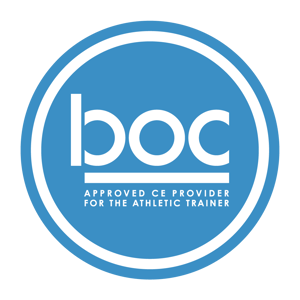3 Course PDF Bundle: Exercise and Intervention for the Older Adult Population
SKU: physi-3course-bundle-ex-oa
Share This Bundle

Description
Buy three and get 25% off the entire course bundle! Bundle our three older adult exercise-specific courses and get more hours of on-demand education for an even better deal. In this bundle you'll receive our popular courses 1413 and 212a and 209 which cover exercise and resistance training as well as fall prevention and management for the older adult population. With over 24 hours of content on the older adult population, you will have many new ideas for exercise prescription after taking these courses. These courses cost over $269 USD if purchased separately, so bundle them up and save!
Course 1 1413 Exercise as Intervention in Geriatrics: Literature Review Literature review of current research evidence on exercise as intervention. The six included articles cover the effects of exercise on fall prevention, in patients with Alzheimer's, for osteoporosis, and with MSK disorders, low back pain, and hip/knee OA. The articles are linked in the PDF, we are not able to provide them directly due to copy right laws, but all the articles are free to download using the links we provide.
Course 12 212 Resistance Training for the Older Adult Research-based principles of resistance exercise prescription for older adults. Covers how to accurately assess muscle performance and prescribe resistance exercises for muscle strength, power, endurance, and/or hypertrophy to improve function.
Course 3 209 Falls: Prevention, Assessment, and Intervention For all rehab professionals. Covers U.S. fall statistics, fall risk factors and consequences, assessing for fall risk, and creating individualized plans focused on evidence-based exercise interventions. Sample exercises and case studies included.
Available Bundle Credits
| Alaska State PT & OT Board | 24.00 | ||
 |
AOTA | 24.00 | |
| Arizona State Board of Physical Therapy | 24.00 | ||
| Arkansas State Board of Physcial Thearpy | 24.00 | ||
 |
BOC | 9.00 | |
| California Physical Therapy Board | 24.00 | ||
| Colorado Division of Professions and Occupations | 24.00 | ||
| Connecticut Department of Public Health | 24.00 | ||
| Delaware Examining Board of Physical Therapists and Athletic Trainers | 24.00 | ||
| District Of Columbia Department of Health | 24.00 | ||
| FPTA | 24.00 | ||
| Georgia State Board of Physical Therapy | 24.00 | ||
| Hawaii Board of Physical Therapy | 24.00 | ||
| Idaho Physical Therapy Licensure Board | 24.00 | ||
| Indiana Physical Therapy Board | 24.00 | ||
| Iowa Board of Physical Therapy and Occupational Therapy | 24.00 | ||
| Kansas State Board of Healing Arts | 24.00 | ||
| Kentucky Board of Physical Therapy | 24.00 | ||
| Louisiana Physical Therapy Board | 24.00 | ||
| Maine Board of Physical Therapy | 24.00 | ||
| Maryland Board of Physical Therapy Examiners | 2.40 | ||
| Massachusetts Board of Allied Health Professionals | 24.00 | ||
| Michigan Board of Physical Therapy | 24.00 | ||
| Mississippi State Board of Physical Therapy | 24.00 | ||
| Missouri Advisory Commission for Physical Therapists | 24.00 | ||
| Montana Board of Physical Therapy Examiners | 24.00 | ||
| Nebraska Department of Health and Human Services | 24.00 | ||
| New Mexico Physical Therapy Board | 24.00 | ||
| North Carolina Board of Physical Therapy Examiners | 24.00 | ||
| North Dakota Board of Physical Therapy | 24.00 | ||
| Office of Professional Regulation, Vermont Secretary of State | 24.00 | ||
| Oklahoma Board of Medical Licensure and Supervision - Physical Therapy | 24.00 | ||
| Oregon Board of Physical Therapy | 24.00 | ||
| Pennsylvania Bureau of Professional and Occupational Affairs - Physical Therapy | 24.00 | ||
| Physical Therapy Governing Board New Hampshire | 24.00 | ||
| South Carolina Board of Physical Therapy | 24.00 | ||
| South Dakota Physical Therapy License Board | 24.00 | ||
| State of Alabama Board of Physical Therapy | 24.00 | ||
| State of Rhode Island Department of Health | 24.00 | ||
| Tennessee Board of Physical Therapy | 24.00 | ||
| Utah Physical Therapy Licensing Board | 24.00 | ||
| Virginia Board of Physical Therapy | 24.00 | ||
| Washington State Board of Physical Therapy | 24.00 | ||
| West Virginia Board of Physical Therapy | 24.00 | ||
| Wisconsin Physical Therapy License Board | 24.00 | ||
| Wyoming Board of Physical Therapy | 24.00 |
This Bundle Includes the Following Items
| Resistance Training for the Older Adult | Course | ||
| Falls: Prevention, Assessment, and Intervention | Course | ||
| Exercise as Intervention in Geriatrics: Literature Review | Course |
Wendy K. Anemaet, PT, PhD, GCS, GTC, COS-C, and Michelle E. Moffa-Trotter, PT, GTC
Wendy K. Anemaet, PT, PhD, is a graduate of the University of Southern California Physical Therapy Master’s program. She is currently a Full Professor at Regis University and former Instructor at the College of Medicine, School of Physical Therapy with the University of South Florida. She completed additional valuable work as a Research Assistant for Biochemistry Rheumatology Labs at Rush University Medical Center and earned her Ph.D. from the University of South Florida, in Aging Studies.
Michelle E. Moffa-Trotter, PT, has served on the editorial board for Physical Therapy in Perspectives, as issue editor for Topics in Geriatrics, and as contributing author for A Clinical Approach to Geriatric Rehabilitation. She has co-authored a book entitled Home Rehabilitation: Guide to Clinical Practice. In addition to publishing numerous articles relevant to rehabilitation, she has conducted continuing education seminars on a range of topics, including muscle performance, home health care, rehabilitation exercise, and pharmacology. She resides in Florida and has been in practice since 1989.
Sarah R.Stillings, MA, PT, MPT, CHT
Sarah R. (Sally) Stillings is a PT and Certified Hand Therapist in Texas. She received her physical therapy degree from the University of North Carolina at Chapel Hill. Prior to becoming a therapist, Sally taught university-level writing courses and was assistant editor of The Journal of Craniomandibular Practice. In her extensive career as a PT, she has held a variety of clinical, teaching, administrative, and business roles, including general PT practitioner, upper extremity specialist, clinic manager, hand therapy clinic coordinator, continuing education (CE) instructor, and CE course administrator. She has also served as Executive Director of the Kellermann Foundation, a U.S. nonprofit organization supporting healthcare and community development in Uganda, East Africa. Her work now focuses on creating evidence-based CE materials for rehab professionals. Sally is a lifelong runner who celebrates all those who cover the ground.

212a Resistance Training for the Older Adult—Course Objectives
Upon completion of this course, participants will be able to:
1. Recall how to define resistance training
2. Identify the goals of resistance training exercises
3. Compare and contrast three methods for assessing strength
4. Recall methods of evaluating power and muscle endurance
5. Identify the principles of resistance training
6. Recognize the necessary parameters for prescribing resistance training
7. Using case studies, choose and prescribe strength, power, endurance, and hypertrophy exercises accurately and effectively for older patients.
212a Resistance Training for the Older Adult—Table of Contents
Page #
HOUR 1
Course Instructions 2
About the Authors 3
Course Description/Course Objectives 4
Table of Contents 5
Pretest 6
Chapter 1: Introduction 7
Chapter 2: Background
What is Resistance Training? 8
Goals of Resistance Training 9
HOUR 2
Barriers to Prescribing Resistance Training 10
Chapter 3: Assessment
Assessing Muscle Performance 12
Assessing Strength with MMT 13
Assessing Strength with Hand Held Dynamometry 18
HOUR 3
Assessing Strength with One Rep Max Testing 29
Case Example 1 30
Case Example 2 32
Assessing Power 35
Assessing Endurance 35
Case Example 3 36
Case Example 4 37
HOUR 4
Chapter 4: Exercise Prescription
Prescribing Resistance Training 38
Principles of Resistance Training
Parameters of Resistance Training 40
Prescribing Strength Training 45
Prescribing Power Training 47
HOUR 5
Prescribing Endurance Training 48
Prescribing Hypertrophy Training 49
References 51
Further Reading 58
Exam 61
Evaluation 69
209 Falls: Prevention, Assessment, and Intervention—Course Objectives
After successfully completing this continuing education course, the learner should be able to:
- Recognize the epidemiology of falls among older adults in the U.S.
- Differentiate modifiable and non-modifiable intrinsic and extrinsic fall risk factors
- Identify fall risk screening principles
- Identify components of a comprehensive fall risk assessment for an older adult
- Choose and apply appropriate fall risk functional measures in case studies
- List interventions appropriate for inpatient and outpatient fall risk management
- Identify universal fall risk precautions
- Differentiate the factors involved in developing a patient-specific fall risk plan of care
- Identify and assess environmental fall risk factors using case studies
- Identify modifications to the home environment to decrease fall risk
- Recognize the research evidence supporting exercise intervention for fall management
- Identify and apply, using case studies, exercise-based fall prevention interventions for older adults
- Identify comprehensive evidence-based approaches to decrease patients’ fall risk
209 Falls: Prevention, Assessment, and Intervention—Table of Contents
Page #
HOUR 1
Course Instructions 2
About the Author / Course Description 3
Course Objectives 4
Table of Contents 5
Introduction 8
Chapter 1: Understanding Falls—Definitions & Epidemiology 9
Demographics: An Aging Population
Definitions 11
Incidence of Falls 13
Morbidity 15
Injury 16
Psychosocial Effects 21
Mortality 24
HOUR 2
Costs 27
Risk Factors 28
Intrinsic Risk Factors
Extrinsic Risk Factors 30
Chapter 2: Clinical Screening and Assessment 33
Screening for Fall Risk
When Fall Risk Screening Is Positive 40
AGS/BGS Algorithm
NICE Guidelines
STEADI Algorithm
Academy of Geriatric PT/APTA Guideline
Screening for Fear of Falling and Depression 43
HOUR 3
Choosing Fall Risk Assessment Functional Measures 44
Berg Balance Scale 46
Single Limb Stance, Eyes Open 47
Five Times Sit-to-Stand Test 48
Timed Up and Go Test 48
Self-Selected Walking Speed 50
Dynamic Gait Index 51
Four Square Step Test 52
Fullerton Advanced Balance Scale 52
Short Physical Performance Battery 53
Completing the Fall Risk Clinical Assessment 54
Completing the Post-Fall Clinical Assessment 55
Chapter 3: Reducing Fall Risks—Creating the Plan of Care 57
Inpatient Risk Reduction Interventions 58
Universal Fall Precautions 59
HOUR 4
Individual Patient Strategies 60
Outpatient Risk Reduction Interventions 63
Patient Education
Muscle Strengthening and Endurance
Range of Motion/Flexibility Exercises 64
Gait Training 65
Balance Training 66
Special Considerations for Frail Older Adults 68
Chapter 4: Addressing the Environment 70
Lighting Conditions 72
Floor Surfaces 74
Hard Flooring Surfaces
Carpet
Throw Rugs
HOUR 5
Trip Hazards 77
Beds 79
Seating 80
Handrails and Grab Bars 82
Stairs 84
Indoors
Outdoors
Bathroom 87
Kitchen 89
Other Modifiable Extrinsic Risk Factors 89
Clothing and Footwear
Assistive Devices
HOUR 6
Chapter 5: Exercise-Based Fall Prevention Strategies 92
Evidence for Exercise Intervention
Multifactorial Intervention vs. Exercise Alone
Recommendations for Exercise Intervention 94
U.S. Preventive Services Task Force
AGS/BGS
National Inst. for Health and Care Excellence
Academy of Geriatric PT/APTA
AOTA
STEADI
Intervention Focus Areas 99
Evidence-Based Fall Prevention Programs 100
A Matter of Balance
Bingocize
CAPABLE
Enhance® Fitness
HOUR 7
FallsTalk 104
Fallscape
Fit and Strong!
Healthy Steps for Older Adults
Healthy Steps in Motion 106
The Otago Exercise Program
Stay Alive and Independent for Life (SAIL) 107
Stepping On
Tai Chi for Arthritis
Tai Ji Quan: Moving for Better Balance
YMCA Moving For Better Balance 109
Individualized Exercise Intervention 111
Gait Training 112
ROM/Flexibility Exercises 114
Strength Training 120
HOUR 8
Balance Training 128
Conclusion 133
Case Studies 134
Appendix A: Patient Education Resources 137
Appendix B: Provider Resources 138
HOUR 9
Appendix C: Exercise Instructions 140
References 154
Examination 165
Evaluation 176
1413 Exercise as Intervention in Geriatrics: Literature Review— Course Objectives
After successfully completing this continuing education course, the learner should be able to: 1. Recognize the effects of physical exercise on static and dynamic balance in the elderly. 2. Identify the reduction in falls associated with different exercise protocols. 3. Recognize the reported effects of exercise on cognition in individuals with Alzheimer’s disease.
- Recall the effectiveness of exercise on bone density in patients with osteoporosis. 5. Define the Star Triad and recall the pathophysiological common denominator of the involved disorders.
- Recall the findings regarding the effectiveness of exercise as conservative management of hip and knee osteoarthritis.
- Identify the effects of exercise on non-specific chronic low back pain in older adults. 8. Identify the study design, objectives, strengths, and limitations of the included studies. 9. Recall the main conclusions of each article presented.
- List ways in which future research can further elucidate the questions raised in each of the research articles.
- Indicate ways in which the information presented in these articles may contribute to functional, occupation-focused practice.
- Identify how application of the information presented may:
- Guide assessment and intervention choices
- Help meet patient-specific rehabilitation goals
- Improve patient outcomes
1413 Exercise as Intervention in Geriatrics: Literature Review Table of Contents
Hour 1
Course Instructions 4 About the Authors
Course Description
Course Objectives
Introduction 9 Article 1: 11 The effects of physical exercise on balance and prevention of falls (21 pages) Hour 2
Article 1 (continued)
Hour 3
Article 2: 12 Effects of physical activity and exercise on the cognitive function of patients with Alzheimer disease (17 pages) Hour 4
Article 2 (continued)
Hour 5
Article 3: 13 Effectiveness of physical exercise on bone density in osteoporotic patients (10 pages) Hour 6
Article 4: 14 Common musculoskeletal disorders in the elderly: the Star Triad (17 pages) Hour 7
Article 4 (continued)
Article 5: 15 Role of physical activity as conservative treatment for hip and knee OA (23 pages) Hour 8
Article 5 (continued)
Hour 9
Article 6: 16 Physical activity for the treatment of chronic low back pain (18 pages) Hour 10
Article 6 (continued)
Examination 18 Evaluation 26
Customer Cancellation:
Customers may request cancellations of their enrollment or subscription in our digital or live educational services, subject to the terms outlined below. Cancellation requests must be made in writing, either through email or through our designated cancellation process.
Refund Policy:
Refunds will be provided according to the following guidelines: i) For cancellation requests made within 5 days of the initial enrollment or subscription, a full refund will be issued. Refunds will be issued using the same method of payment used for the original transaction, unless otherwise agreed upon in writing.
Provider Cancellation:
In the event Physicourses cancels your course, you will be issued a full refund or transfered to a course of equal or greater value.
Physicourses Conflict of Interest Disclosure Policy for Authors and Staff:
All persons in a position to control the content of any educational activity (authors or staff from Physicourses) are required to disclose to Physicourses any potentially biasing or potential conflict of interests in relationships of a financial, professional, or personal nature.
The intent of this disclosure is not to prevent authors or staff with commercial affiliations from planning an educational activity, or to prevent a Presenter with commercial affiliations from presenting, but rather to inform Physicourses of any potentially biasing relationships so that conflicts are resolved prior to the activity.
It is the policy of Physicourses to ensure balance, independence, objectivity and scientific rigor in all of its continuing education activities. All relevant conflicts of interest identified by the planner, presenter, or as determined by Physicourses will be disclosed to the audience verbally and in writing prior to the start of the presentation.
Definitions for Authors/Staff:
Relevant financial relationships are those relationships in which you benefit by receiving a salary, royalty, intellectual property rights, gift, speaking fee, consulting fee, honoraria, ownership interest (e.g., stocks, stock options, or other ownership interest, excluding diversified mutual funds), or other financial benefit. Financial relationships can also include “contracted research” where the institution gets the grant and manages the funds and you are the principal or named investigator on the grant.
Educational Level: Intermediate
Target Audience: PT, PTA, OT, OTA
Course Completion Requirements: Passing an online exam with 70% or greater will be required to earn continuing education credit
-
Resistance Training for the Older Adult is approved for 0.5 CEUS. 5 contact hours
-
Falls: Prevention, Assessment, and Intervention is approved for 0.9 CEUS. 9 contact hours
-
Exercise as Intervention in Geriatrics: Literature Review is approved for 1.0 CEUS. 10 contact hours